Photo
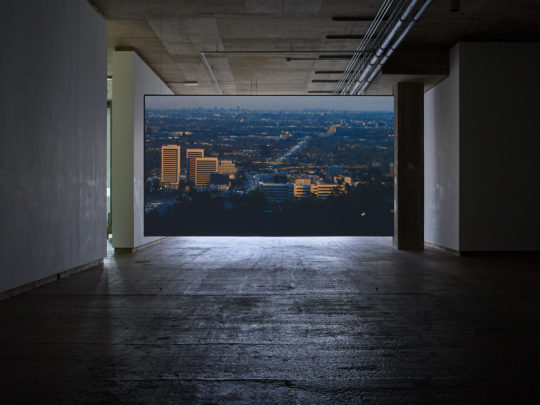
Exhibition visit Firth Street Gallery
Fiona Tan Elsewhere
‘The central and eponymous work Elsewhere takes the form of a HD film installation made using footage shot directly from Tan’s former studio overlooking the city of Los Angeles. A voice-over provides a comprehensive description of a form of utopia written without irony by the artist herself. Trying to imagine and formulate such a world can be surprisingly difficult and brought Tan to the realisation that she would never want to live in such a detached and insular state. The imagery of a decidedly urban environment with its pollution and endless streaming traffic combined with the report of a chillingly ideal world seem somehow at odds with each other while at the same time entirely pertinent to the contemporary world.Three other film works are shown on vertical flat screen TVs. These pieces depict the endless streaming traffic on LA's highways with the trails of tail and headlights creating a mesmerising and luminous moving surface. For one of these works, Vertical Red, Tan has composed a seemingly simple piano soundtrack which responds and echoes the rhythms of the vehicle brake lights.’
Thoughts:
The piece was beautifully executed and soothing to see. Before seeing this exhibition, I first visited the Marian Goodman Gallery to see Dara Birnbaum video installations. The latter I did not appreciate as much compared to Tan’s work, as the big architectural structures which reigned over Birnbuam’s pieces, overpowered the art, injecting also a feeling of discomfort and consumerism.
Tan’s piece instead was more subtle, simple and well presented. What caught my attention the most was that hanging from the ceiling there was a white box containing what seemed as a directional speaker which projected the sound only within the space below the box. It was as if the sound was being contained within a small invisible square, once you stepped out, you heard less and less.
I personally think it was a great idea, also it was positioned in between two vertical videos of endless traffic, so you could enjoy the sound and video simultaneously.
This detail of the speaker, definitely inspired me to possibly included directional ceiling speaker in my installation.
0 notes
Audio
Footstep Library (project 4) experimentation:
-Protools Altiverb
-Outdoor footsteps
-Leafs
0 notes
Audio
Footstep Library (project 4) experimentation:
-Protools Altiverb
-Indoor footsteps
-Barefoot
-Sticky surface
0 notes
Audio
Footstep Library (project 4) experimentation:
-Protools Altiverb
-Indoor footsteps
-Formal shoes
-Echoed space
0 notes
Photo

Book: The Sound Effects Bible by Ric Viers (2008)
Motto to follow while working on Foley
0 notes
Photo
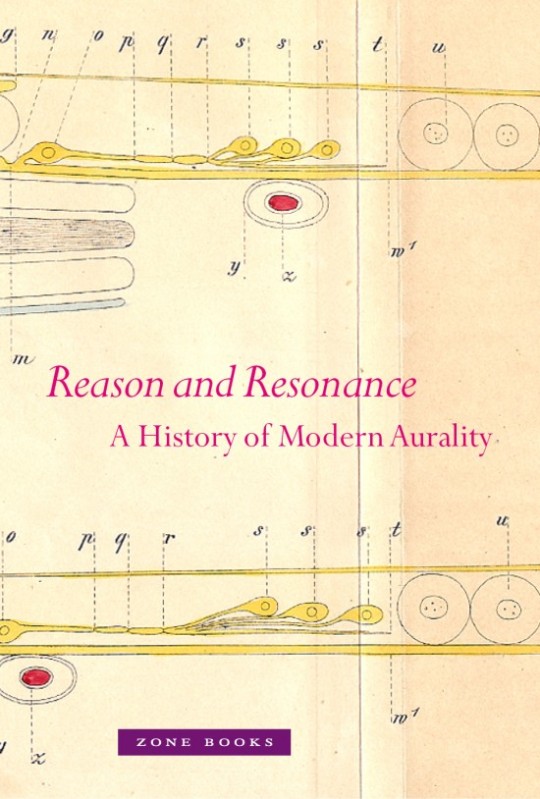
Reason and Resonance: A History of Modern Aurality by Veit Erlmann ( 2010)
Understanding the anatomy of the ear and listening.
0 notes
Audio
Binaural experimentation Project 3:
This may not be the most serious experimentation, and merely is result from having a break from a long day in front of the computer with my House and course mate Carla. The reason why I decided to post this, is because by spinning around in a circle while recording, resulted into a panning effect. It is not a new discovery for sure, but it pushes me to have more fun and explore these binaural earphones.
0 notes
Photo

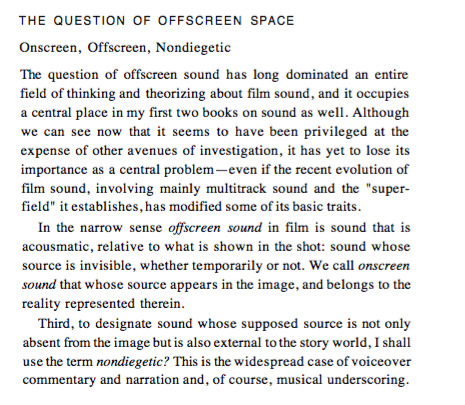

Audio-Vision, Sound On Screen By Michel Chion (1990)
Research Project 2:
Understanding the techniques and meaning for sound on screen. This concept of Materialising Sound indices, giving more layers to a sound, I find is something we must work on in “The Frequency”, as there is no image to rely on, the sources of the sound indices are not seen. For then, we must make sure that in some way the sound perceived can create an image of the source. This same concept could also be related to The Sound Maze as I will probably be dealing with layers of sounds and perception.
0 notes
Video
youtube
Delicatessen (1991) by Jean-Pierre Jeunet and Marc Caro
‘Delicatessen (1991) is the debut feature by the pairing Jean-pierre Jeunet and Marc Caro [..] Delicatessens is set in a decaying city of the future,where nothing grows and food is so scarce that the local butcher has started to sell human meat. In order to keep his trade going. He employs young men and then murders them, but is also prepared to slaughter his neighbours in the crumbling apartment block’ ( G.Austin ‘Contemporary French Cinema’ 1996:136)
Jean-Pierre Lelong:foley artist
Thoughts:
Project 2
This rhythmic scene that I have decided to post, really caught my attention, in terms of the diverse sound fx, foley and music, that rhythmically overlap. The progression of these sounds is beautifully executed.
It is a good example and inspiration especially for a particular task we have to deal with in the foley for “The Frequency”, as we were requested, during the protagonist speech about ‘bad day’, to add the sound of a characteristic prop that would be in the room during the speech, and tap rhythmically to it.
0 notes
Photo
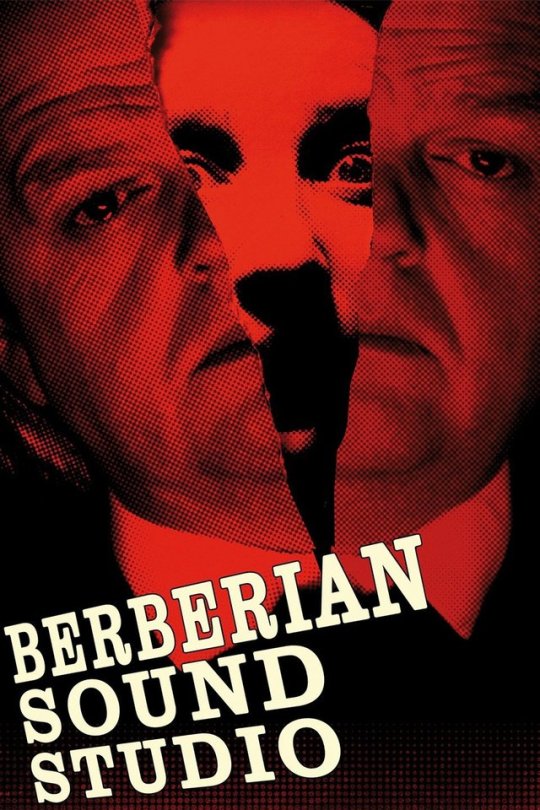
Berberian Sound Studio (2012)
Directed by Peter Strickland
‘They introduce us to the dimly lit chambers of an Italian post-production studio, tinged in a subtle 1970s kitsch, where Gilderoy (Toby Jones), a meek sound engineer from Dorking, arrives to supervise the audio for a giallo feature. The Equestrian Vortex, directed by Santini (Antonio Mancino) is the movie at the centre of Strickland's narrative. But we never see it. Save for some brilliant, blood red opening titles, The Equestrian Vortex exists only as a sheen of light on Gilderoy's face as he watches from the Foley-stage, making sounds to accompany the horror using an array of wet vegetables.’
Thoughts:
I decided to watch this film, as it presented the world of Foley in horror Films. Many of the techniques used are very common when dealing with horror movies, such as the use of various vegetables i.e Watermelon.
The sound is great, though the film lacks a bit in terms of story, being at times confusing and boring. Also as it is classified as a drama/horror, I find it difficult to categorise it as such. The focus in fact is on the sound and the original camera shots.
A part from this, I would like in the future to be able to do Foley for Horror, as it is own of my favourite genres.
0 notes
Audio
Binaural Experimentation (project 3):
Work in Progress
During the Christmas holiday’s, being ill did not allow me to got out of the house as much. So I could only explore the soundings of my House in Elephant and Castle. This is one experiment consist’s of me going around my kitchen following it’s square shape, touching any electronic device I could find in front of me. I consequently recorded in the same order the electric devises which where present in the previous binaural recording. So this will allow to then working on ‘Turning’ my kitchen ‘inside out’.
0 notes
Text
Thoughts on Sound Maze/Labyrinth
I have been thinking a lot about the technical options I have for this piece, also not knowing exactly the space in which we will be able to present our pieces.
The concept of this piece is forming itself step by step. I know for sure now that I would like to utilise the design of the labyrinth as a tool for a progression of sounds. These sounds would possibly explore the auditory dimension, through the use of possibly: Binaural, contact and electromagnetic recordings. As one of main inspiration, I would like to incorporate Hollings idea, in the Bright Labyrinth, of seeing the labyrinth as a network turned inside out. This inspired me also of thinking of presenting 2 or 3 paths within my maze, where you would be immersed in two or three different environments (outdoors and indoors) that are considerably known and lived within on a daily bases. I.e a kitchen. Through the use of this binaural recording, these environments, will initially will be presented with what you could call ‘obvious’ sounds, those that we are most costumed too and forget. Consequently it would be interesting to go in depth within the layers of sounds that we hear normally in that certain space. Those that are heard and at times ignored, but also those that are unheard. To execute this idea, I would like to use both contact and electromagnetic recordings. What I would like is that with the addition of these latter sounds, the environment once ‘known’ , has become more and more distant, distorted and nearly ‘unknown’. The same feeling of being lost within a Labyrinth. The final ‘unknown auditory space, will be as arriving at the centre of the Labyrinth, as there should be no such thing as a goal or a prize or merely a conclusion. It is simply a game and my attempt of challenging movement and listening to auditory ‘virtual’ space/dimension, without visuals.
A turn to the auditory dimension is thus potentially more than a simple changing of variables. It begins as a deliberate decentering of a dominant tradition in order to discover what may be missing as a result of the traditional double reduction of vision as the main variable and metaphor. This deliberate change of emphasis from the visual to the auditory dimension of primary experience that is now forgotten or covered over in the too tightly interpreted visualist traditions.’ (Idhe, Listening and Voice Phenomenologies of Sound).
In terms of Movement, I have thought a lot of, about what could encourage the audience to move forward in the maze. My First thought obviously was the use of sensors, though having worked with them last year and experimented recently, It is too much work and unreliable. I want to try and challenge myself, but also try and keep things more simple. So because one of two of my projects involve Foley, I figured that there could possibly be another way. Thanks to the performance ‘The Foley Explosion’,I was inspired by something in particular. As I described in a previous post, the artist had a small wooden platform with a contact microphone, which allowed her footsteps to be amplified during her performance. I started to think, that what could attract the audience, could be the fact they are able to immerse themselves within the auditory space, with the sounding of their own footsteps. As Nudds affrims in Sounds&Perception, that: ‘We are good at recognising natural sounds, such as footsteps,hands clapping, paper tearing, and so on.’ The footsteps additionally, could be sonically adapted to the environment or not.
Not all the wooden platforms will be amplified, only those that will lead you into a certain path, so to encourage moving forward within the piece.
Or The wooden platforms could me connected with a read thread just like Ariadne’s guiding red thread.
This is at the moment my favourite Idea. Though I have to still figure out the technical aspects of the installation. As Im wanting binaural this means:
- I would need bluetooth headphones, or mp3 players?
-How will I layer all the sounds, especially how would they hear their footsteps?
- Maybe it is the case that I will have to give up on binaural recordings, and use speakers. That would make the sound to dispersive
* Idea added 8th January after Tan’s Exhibition:
If there is not a possible way to incorporate Binaural and the footsteps together, maybe I could use Tan’s Idea of the directional ceiling speaker to reproduce the ‘normal’ environment and the additional sounds during the progression throughout the maze. And the footsteps would be amplified by two speakers on the floor, at each side of the the wooden platforms.
I maybe need to draw a Design.
0 notes
Photo

Researching for Project 3: Sounds and Perception by Matthew Nudds & Casey O’Callaghan
Quotes:
pg 75: ‘What sounds we experience and how we experience them to be is determined by the way the auditory system groups the frequency components it detects: the sounds we hear correspond to frequency component groupings. If the auditory system groups the components it detects into a single group, then we experience a single sound; if it groups them into two groups, then we experience two sounds. Given that the auditory system groups frequency components that are likely to have been produced by the same source, the sounds we experience normally correspond to their sources---to the things that produced them.
pg 77: ‘The sounds that we hear are instantiated where we are. But they usually are not only instantiated where we are; they usually are instantiated throughout a region of space that includes where we are.’
0 notes
Video
vimeo
Experimentation (Project 3) Contact Mic: Bodily sounds
I spent a whole day recording the sound of my stomach. I initially lay down and found a comfortable position in which to record, and just waited till my stomach started to perform for me. Some recordings are with a contact microphone and TASCAM recorder. Though for others, I decided to use a guitar amplifier, to amplify the rumbling sounds within me. I additionally played around with the reverb and delay of the amplifier, so to create more depth and immersion. What I found interesting, was also changing the position of the contact mic on my stomach and the further I moved towards the lower intestine, the resulting sounds where that of water dripping.
The sounds which resemble that of a heart, are instead the rhythmic tapping upon my stomach, Why did I not simply recored my own heart? Well I tried, but the recordings were too quite and actually very hard to capture. So following the foley motto: “Listen to the prop. Don’t watch the prop. It affects your perception” (Ament, The Foley Grail, 2009:119). I decided to create my own sound, by exploiting the reverberant and resonant taps on my stomach, allowing me also to decide the tempo.
The recreated heart sounds, may not exactly resemble the original, though I wanted to test sound perception and association. I in fact, I found it necessary to have a video (which I shot In Rome) that did not have anything to do with what is heard, though I could only think that the shape of the mosquito repellant reminded me of a maze, progression and illusion.
To achieve this sound piece, I simply used Eq to clean the recordings and played around with volume and panning. I did not use any additional reverb.
Questions and observations after experimentation:
- what sounds make people move?
- Use maze as a tool to introduce a progression of sounds
- Introduce contact mic in the installation
- Bodily sounds could be used, but still figuring out what progression of sounds I want
- The unheard sounds: contact mic=bodily and electromagnetic recordings
-Binaural=immersion
0 notes
Photo
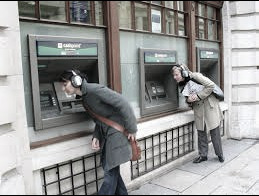
Electrical Walks by Chirstina Kubisch. (project 3)
‘Since the end of the 1970s Christina Kubisch works with the system of electromagnetic induction, which she developed from the basic technique to an individual artistic tool. In 2003 she started her research on a new series of works in public space, which trace the electro-magnetic fields of urban environments in the form of city walks. The first Electrical Walk took place in Cologne in 2004.
With the magnetic headphone and a map of the environs, on which the possible routes and especially interesting electrical fields are marked, the visitor can set off on his own or in a group. The perception of everyday reality changes when one listens to the electromagnetic fields; what is accustomed appears in a different context. Nothing looks the way it sounds. And nothing sounds the way it looks.’
Thoughts:
I find that these walks represent very much what I am trying to achieve when using the electromagnetic pick up microphone. It is so true that nothing looks the way it sounds, and nothing sound the way it looks. I know that this idea of making the unheard heard will have much use to my sound maze, especially when it comes to turning environments inside out and exposing/amplifying what we can’t possibly hear on daily basis.
0 notes
Photo
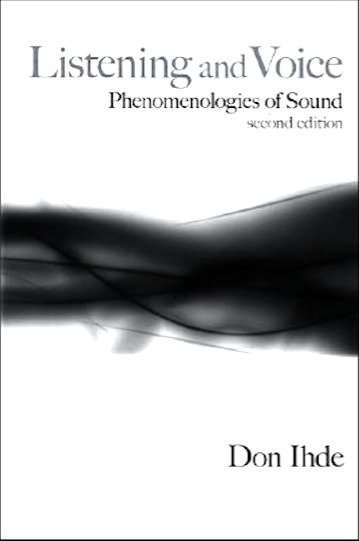
Listening and Voice Phenomenologies of Sound by Don Ihde (2007)
I used this book previously for my first chapter of my dissertation discussing about objects:
“We can perceive the size of an object dropped into water, that something is rolling, the material composition of an object from the sound of an impact, and the force of an impact.
We can distinguish objects with different shapes, and we can have a good idea of the length of a rod dropped onto the floor.”
Sound can be thought to be an anticipatory clue for ultimate visual fulfillments (Ihde, 2007:27) an understanding of causality and the physicality of an object. What Nudds describes, may be seen as just a list of actions, where sound is merely the consequence of the motion of the material. In this case the result of static nature being disturbed, results in sound.
I found that this book has also inspired my ‘Sound Maze’ in terms of understanding listening, perception and the auditory dimension. These are the quotes that have caught my attention the most:
pg 13: ‘ A turn to the auditory dimension is thus potentially more than a simple changing of variables. It begins as a deliberate decentering of a dominant tradition in order to discover what may be missing as a result of the traditional double reduction of vision as the main variable and metaphor. This deliberate change of emphasis from the visual to the auditory dimension of primary experience that is now forgotten or covered over in the too tightly interpreted visualist traditions.’
pg 15:’ A deliberate decentering of visualism in order to point up the overlooked and the unheard, its ultimate aim is not to replace vision as such with listening as such. Its more profound aim is to move from the present with all its taken-for-granted beliefs about vision and experience and step by step, to move toward a radically different understanding of experience, one which has its roots in a phenomenology of auditory experience.’
pg 14: ‘It is the invisible that listening may attend.’
pg 54: ‘The movement from that which is heard (and unseen) to that which is seen raises the question of it counterpart. Does each event of the visible world offer the occasion,even ultimately from a sounding presence of mute objects, for silence to have a voice? Do all things, when fully experienced,also sound fourth?’
pg 59: ‘It is precisely because of the very ‘obviousness’ not of experience, but of the traditions concerning experience that there is reason to postpone what is “first” in the turn to the auditory dimension. [..] A strategy that begins in approximations is one that must move with extreme care so as not to overlook or fail to hear what also may be shown in the seemingly weaker capacities of auditory experience.’
0 notes
